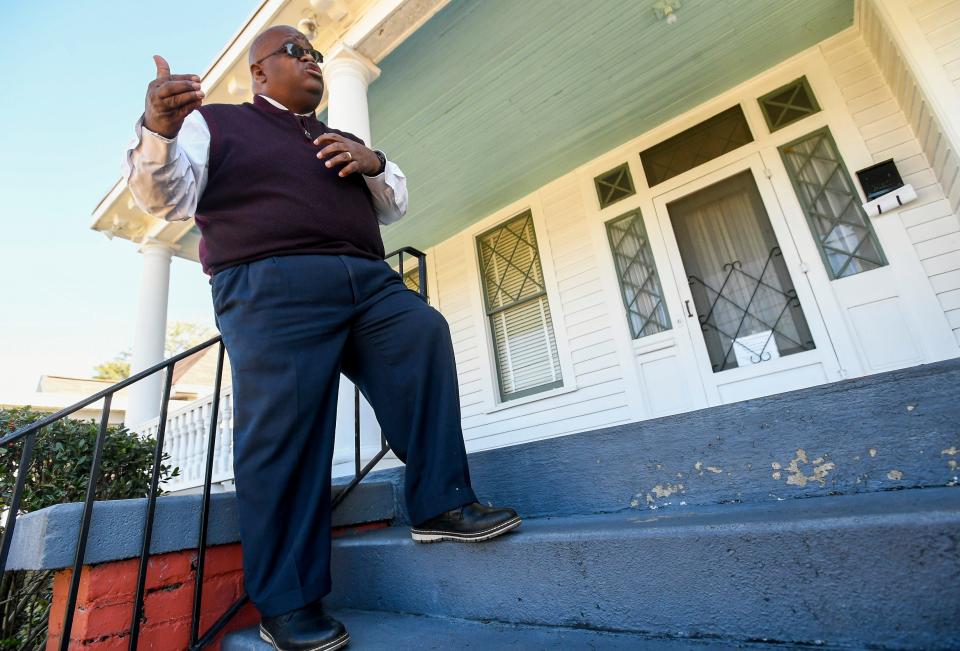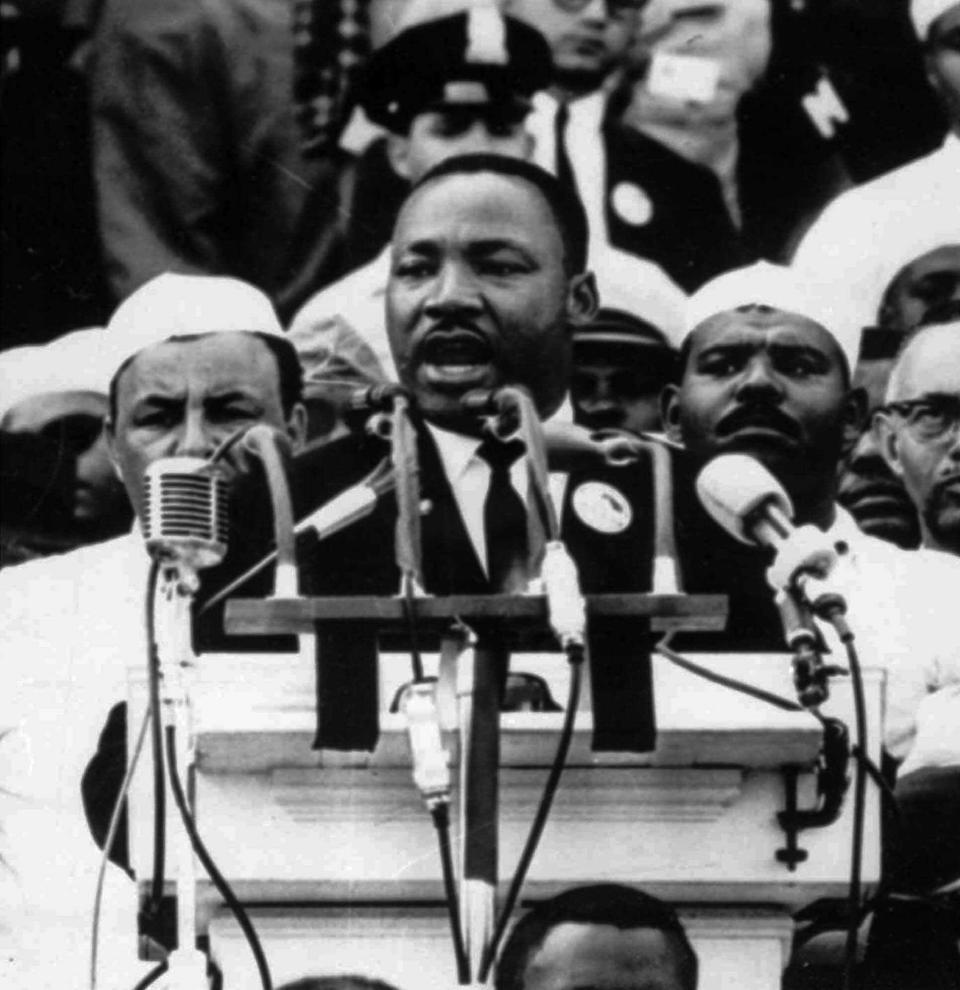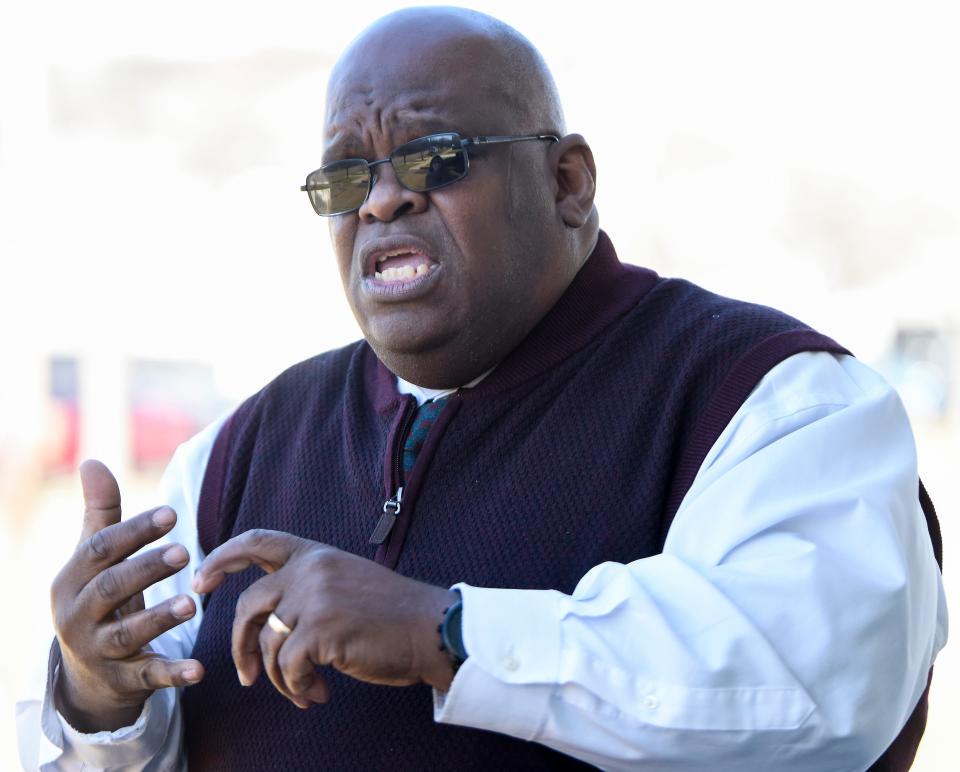Martin Luther King Jr.'s teachings have formed the base of modern activism
- Oops!Something went wrong.Please try again later.
- Oops!Something went wrong.Please try again later.
Dr. Howard Robinson believes Americans have already learned Dr. Martin Luther King Jr.’s teachings on nonviolence.
Those lessons, which call for using empathy instead of hate for an adversary, became a formula used throughout the civil rights movements of the 1950s and '60s. Robinson believes that formula is still valid today.

Robinson, who is archivist and historian at Alabama State University, stood on the steps of the former home of Dr. Martin Luther King, Jr. on South Jackson Street. This part of Montgomery holds important landmarks from the civil rights movement, including the drugstore owned by Richard Harris, where Freedom Riders stayed at during the Freedom Rides.
“And throughout the 20th century, it was a really the most prestigious Black community of Black neighborhoods in the city of Montgomery,” said Robinson.
More: Here's how to celebrate MLK Day in person or from home
While King had a theological understanding of nonviolence, the practical details of his philosophy were formed, taught and learned in Montgomery, according to Robinson.
“And so, the idea, the application of nonviolent civil disobedience as really a cornerstone in the modern civil rights movement really is birthed here in Montgomery,” said Robinson.
Robinson explained that college students and young people in Montgomery attended workshops and studied nonviolence. The workshops allowed them to strategize using nonviolence and civil disobedience as a way to challenge discrimination and racism across the South.
“You don't have to have these workshops and these mass meetings to really explore and examine and reinforce this idea of what it means to be nonviolent, right?” said Robinson. “Because that has entered into the American psyche. It's a part of the American experience, right?”

Robinson used to refer to the civil rights movement of the 1950s and 1960s as the modern civil rights movement, but feels he can no longer do so after the response to the killing of George Floyd. The mid-century civil rights movement fought for legislative change in the same way that the current Black Lives Matter activism is doing, according to Robinson.
The current activism is based around the same issues now — legislative change, voting rights, economic equality and criminal justice reform — as they were during the mid-century civil rights movement, said Robinson.
“The biggest thing that I think that this generation can learn is not the nonviolence, I think they got that,” said Robinson. “It's the lobbying and organizing that happens behind the scenes.”
Robinson highlighted the March for Our Lives movement as modern models for organized activism. He explained the civil rights movement originated from the position that all men are created equal and that there’s a desire for American to live up to the virtues of liberty, justice and equality.
In contrast, he said, the events surrounding the Capitol riot on Jan. 6th, 2020, in Washington, D.C., do not reflect the teachings of Martin Luther King, Jr.
“Jan. 6 represents something very different,” said Robinson.
He explained the civil rights movement originated from the position that all men are created equal and that there’s a desire for American to live up to the virtues of liberty, justice and equality.
The leadership of the civil rights movement diffused the violence in their activism, and the leadership of the Capitol riot did not work to condemn violence in their ranks.

“They didn't coddle the anarchism amongst them, they did not make excuses for people who resorted to violence, right,” said Robinson. “They worked with them, they tried to resolve it, it happened here in Montgomery.”
Jemma Stephenson is the children and education reporter for the Montgomery Advertiser. She can be reached at jstephenson@gannett.com or 334-261-1569.
This article originally appeared on Montgomery Advertiser: Martin Luther King Jr's nonviolence is part of all modern activism

